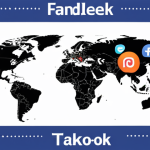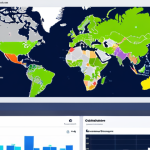Dreaming of a career that spans continents, connecting with diverse audiences, and truly making an impact on a global scale? Landing a job in overseas marketing feels like the ultimate adventure, doesn’t it?
I remember the thrill, and honestly, a few sleepless nights, when I first decided to dive into this incredibly dynamic field myself. It’s far more than just translating campaigns; it’s about deeply understanding cultural nuances, adapting to rapid technological shifts like AI-powered analytics and hyper-personalization, and mastering the art of building trust across borders.
The landscape is constantly evolving, with new platforms emerging and the demand for data-driven insights skyrocketing, making traditional approaches feel almost archaic.
From what I’ve personally experienced, success isn’t just about knowing digital tools; it’s about having a real pulse on global trends and truly localizing your strategy for authenticity.
Navigating this exciting, competitive space requires a unique blend of expertise, adaptability, and forward-thinking vision. Let’s find out exactly.
Deep Dive into Global Market Intelligence

Venturing into overseas marketing isn’t just about translating a few taglines; it’s about becoming a true anthropologist of commerce. My own journey into this field taught me quickly that the superficial understanding of a market simply won’t cut it. You need to dive headfirst into the very soul of a target region, understanding its economic drivers, social trends, political landscapes, and even the subtle cultural nuances that dictate consumer behavior. This isn’t just about reading reports; it’s about listening, observing, and immersing yourself. I remember one particularly challenging campaign where we assumed a certain holiday had universal significance, only to discover, thankfully before launch, that its meaning was drastically different in our target Asian market, requiring a complete pivot in messaging. This level of granular insight is what differentiates a truly effective global marketer from someone just executing a localized ad spend.
1. Mastering Market Research Methodologies
To truly excel, you need to be adept at both quantitative and qualitative research. This means not just knowing how to pull numbers from Nielsen or Statista, but also understanding how to design and conduct effective focus groups, in-depth interviews, and ethnographic studies. For instance, I’ve found immense value in spending time on local social media platforms, observing conversations, and using sentiment analysis tools to gauge public perception around various topics and brands. It’s about more than just data points; it’s about the story those data points tell about human behavior and aspirations. You’re looking for the ‘why’ behind the ‘what’.
2. Leveraging AI for Predictive Analytics and Trend Spotting
The game has changed with AI. What used to take weeks of manual analysis can now be done in hours. Tools powered by machine learning can predict consumer behavior, identify emerging trends before they go mainstream, and even segment audiences with uncanny precision. In my personal experience, integrating AI-driven analytics into our strategy allowed us to identify niche markets we hadn’t even considered, leading to significantly higher ROI. It’s not about replacing human intuition, but augmenting it, providing a clearer, faster pathway to understanding complex global markets. Think of it as having an incredibly powerful co-pilot for your market exploration.
Cultivating Cross-Cultural Communication Mastery
One of the most profound lessons I learned early on in overseas marketing is that language is merely one layer of communication. True mastery lies in understanding the unspoken rules, the underlying values, and the subtle cues that shape interactions across different cultures. It’s an art form, really, a delicate dance of empathy and respect. I recall a challenging negotiation with a European partner where my direct, results-oriented American approach initially fell flat; it was only when I adapted my style to a more patient, relationship-focused dialogue, learning to appreciate the value they placed on rapport-building, that we made significant progress. This ability to adapt your communication style, not just your words, is paramount for building lasting trust and achieving your marketing objectives globally.
1. Beyond Translation: The Art of Transcreation
This is where marketing truly shines on a global stage. Transcreation isn’t just translation; it’s about recreating content that evokes the same emotion, conveys the same message, and achieves the same intended impact in a different cultural context, even if the literal words are completely different. I’ve personally seen campaigns fail spectacularly because they were merely translated, losing their core appeal or, worse, inadvertently causing offense. A successful transcreation understands local idioms, humor, taboos, and aspirations, ensuring that the message resonates deeply with the target audience. It’s about cultural alchemy, transforming a message to fit a new soul.
2. Navigating High-Context vs. Low-Context Cultures
This concept, often overlooked, can make or break your global communication strategy. High-context cultures (common in many Asian, Middle Eastern, and Latin American societies) rely heavily on implicit communication, non-verbal cues, and shared understanding, while low-context cultures (like those in North America and Western Europe) prefer explicit, direct communication. I remember realizing the importance of this when I was presenting a new product concept in Japan; my slides were far too direct and outcome-focused for their preference for subtle suggestion and collaborative discussion. Learning to adjust my presentation style, allowing for more time for implicit understanding and relationship building, was a game-changer for me.
Harnessing the Power of Digital Tools and AI in Global Marketing
The digital landscape is a dynamic beast, and in global marketing, it’s even more complex. What works in one country on one platform might be completely ineffective or even inappropriate elsewhere. This is where a deep understanding and hands-on experience with a diverse array of digital tools, augmented by the relentless march of AI, becomes not just an advantage, but a necessity. From programmatic advertising tailored to specific regional consumer segments to hyper-personalized content delivery powered by machine learning, the tools at our disposal are more powerful than ever. I’ve spent countless hours experimenting with different platforms, A/B testing ad creatives across various cultural contexts, and learning to interpret the vast datasets that these tools generate. It’s exhilarating and, at times, overwhelming, but it’s where the magic happens.
1. Implementing Global SEO and Localization Strategies
Simply having a website isn’t enough; it needs to be found by your target audience across different search engines and in multiple languages. This involves not just keyword research in local languages, but understanding regional search engine preferences (e.g., Baidu in China, Yandex in Russia) and adapting your content structure accordingly. I recall one project where we significantly boosted organic traffic in a specific European country by optimizing for long-tail keywords that reflected local dialect and search intent, something a generic global SEO strategy would have missed. It’s about ensuring your digital footprint is visible and relevant, wherever your audience may be searching.
2. Leveraging Cross-Platform Advertising and Analytics
Understanding how consumers interact with different digital touchpoints across the globe is crucial. This means not just knowing Google Ads or Facebook, but exploring local alternatives, niche social platforms, and regional e-commerce giants. More importantly, it’s about tying all these disparate data points together with robust analytics. I’ve personally experienced the power of using a centralized analytics platform to track user journeys across different countries and channels, allowing us to identify common pain points and optimize conversion funnels globally. This integrated approach, often powered by AI insights, allows for truly data-driven decisions that cut through the noise of international digital marketing.
| Attribute for Success | Description for Overseas Marketing | Why It Matters (My Perspective) |
|---|---|---|
| Cultural Agility | Ability to rapidly adapt communication, strategy, and behavior to diverse cultural contexts. | Crucial for avoiding missteps and building genuine rapport. It’s more than just tolerance; it’s genuine appreciation. |
| Data Literacy | Proficiency in analyzing complex datasets, identifying trends, and making data-driven decisions. | In a globalized world, intuition isn’t enough. Data provides objective insights that cut through biases. |
| Digital Proficiency | Hands-on experience with a wide array of global digital marketing tools (SEO, SEM, social, analytics). | The landscape is constantly evolving. Being hands-on allows for rapid adaptation and effective campaign execution. |
| Strategic Thinker | Capacity to develop long-term, scalable marketing strategies that account for global variations. | You’re not just running ads; you’re building brands that resonate globally. Requires foresight and adaptability. |
| Resilience & Adaptability | Ability to thrive in ambiguous, fast-paced environments with frequent challenges and changes. | Global marketing is rarely linear. You’ll face unexpected hurdles, and a flexible mindset is your best asset. |
Building an Indispensable Global Network
Beyond the technical skills and cultural understanding, what truly accelerates your career in overseas marketing is the network you cultivate. I genuinely believe that some of my biggest breakthroughs and most insightful lessons came not from textbooks, but from conversations with fellow marketers, local experts, and even ex-pats working in different regions. These connections become your eyes and ears on the ground, providing invaluable insights that no amount of desk research can replicate. It’s about building bridges, not just for business, but for mutual learning and support in a field that is constantly in flux. I recall a specific instance where a casual conversation with a former colleague based in Southeast Asia completely reshaped our approach to a product launch, saving us from a costly misstep because he shared insights on local purchasing habits that were unique to that region.
1. Engaging with Global Marketing Communities and Associations
Joining organizations like the American Marketing Association (AMA) with an international focus, or specific regional marketing groups, can open doors to a wealth of knowledge and connections. Attending virtual summits, webinars, and in-person conferences allows you to stay abreast of the latest trends and meet professionals facing similar challenges. I’ve found that even just actively participating in LinkedIn groups focused on international business can lead to serendipitous connections that provide immense value. It’s about being present where the conversations are happening and actively contributing to them.
2. Leveraging LinkedIn and Professional Platforms for Outreach
LinkedIn is an absolute goldmine for global networking. Don’t just connect with people; engage with their content, offer thoughtful comments, and share relevant insights. When reaching out, personalize your messages and clearly articulate why you’re connecting. I’ve had tremendous success initiating conversations with leaders in specific overseas markets simply by referencing an article they wrote or a project they spearheaded. It shows genuine interest and opens the door for a meaningful dialogue. Remember, every connection is a potential learning opportunity or a future collaborator.
Crafting a Portfolio That Speaks Volumes Across Borders
Your resume might get you an initial glance, but your portfolio is what truly tells your story and demonstrates your capabilities in overseas marketing. It needs to be more than just a collection of case studies; it should be a narrative that highlights your global mindset, your cross-cultural agility, and your ability to deliver measurable results in diverse markets. I remember meticulously curating my own portfolio, ensuring that each project showcased a different aspect of my global marketing experience, from multi-lingual SEO campaigns to culturally tailored social media strategies. It’s your personal showcase, a testament to your ability to navigate the complexities of international business, and it must resonate with hiring managers who are looking for exactly that unique blend of skills.
1. Showcasing Cross-Cultural Project Experience
When presenting projects, don’t just state the results; articulate the challenges you faced in adapting your strategy for different cultural contexts and how you overcame them. For example, if you ran a campaign in Europe, highlight how you localized messaging for distinct countries like Germany versus France, or how you navigated different consumer privacy regulations. Even if you don’t have direct overseas work experience, demonstrate how you’ve approached projects with a global perspective, perhaps by researching international competitors or analyzing global market trends. This demonstrates your proactive approach to understanding varied market demands.
2. Quantifying Your Global Impact with Data
Metrics speak louder than words, especially in marketing. For each project in your portfolio, quantify your impact using relevant KPIs (Key Performance Indicators) such as increased market share in a new region, improved conversion rates on localized landing pages, or the ROI of an international ad campaign. Don’t just say “increased engagement”; specify “increased engagement by 25% in the Brazilian market after implementing a culturally specific content strategy.” This precision gives your achievements credibility and demonstrates your understanding of what drives success in international marketing.
Mastering the Art of Cultural Nuance in Your Applications
Getting a job in overseas marketing isn’t just about what you know; it’s also about how you present yourself, especially when you’re applying to companies with strong international footprints or based in cultures different from your own. I’ve learned, sometimes the hard way, that a generic application tailored for a domestic role simply won’t cut it. You need to understand the cultural expectations around professionalism, communication style, and even resume formatting in the country or company you’re targeting. This attention to detail signals your genuine interest and your inherent understanding of cross-cultural communication, which is, after all, the core of overseas marketing. It’s about demonstrating your cultural intelligence from the very first interaction.
1. Tailoring Resumes and Cover Letters to Local Norms
Research the typical resume and cover letter formats for the target country or company. For instance, in some European countries, a photo on your CV is common, while in others like the US, it’s generally avoided. Your cover letter should reflect the communication style of the region – more formal and elaborate for some, more concise and direct for others. I once spent hours researching the preferred tone for applications in Germany, realizing that a more direct, factual, and less overtly “boastful” approach was favored compared to the more enthusiastic American style. This level of customization shows respect and professionalism.
2. Preparing for Culturally Specific Interview Questions and Etiquette
Interview processes can vary wildly across cultures. Be prepared for different levels of formality, types of questions (some cultures might delve more into personal life, others strictly professional), and expectations regarding body language or direct eye contact. If possible, research the company culture and the interviewers themselves. I found it incredibly helpful to practice answering questions that probed my experience with cultural challenges, and to prepare examples of how I’ve successfully navigated cross-cultural misunderstandings. It’s not just about showcasing your skills, but your cultural sensitivity and adaptability in real-time.
Navigating Visa and Relocation Realities
Once you’ve aced the interviews and landed that dream overseas marketing role, the real-world logistics kick in, and trust me, they can be as challenging as landing the job itself. It’s easy to get caught up in the excitement of a new country, but overlooking the practicalities of visas, housing, banking, and even local transportation can quickly turn thrilling into overwhelming. I’ve personally navigated the labyrinthine processes of obtaining work permits and setting up a new life abroad, and it requires patience, meticulous organization, and a healthy dose of resilience. It’s a significant life change, and being prepared for the administrative hurdles is just as important as being ready for the professional ones.
1. Understanding Visa and Work Permit Requirements
This is often the first and most critical hurdle. Research the specific visa category required for your role and nationality for the target country. Be prepared for extensive paperwork, potential interviews, and varying processing times. Some countries have highly complex points-based systems, while others are more straightforward. I made sure to start this process well in advance, gathering all necessary documents like educational transcripts, proof of funds, and professional references long before I even received an offer. Proactivity here can save you immense stress and prevent delays that could jeopardize your job opportunity.
2. Planning for Relocation Logistics and Cultural Integration
Beyond the visa, consider the practicalities: housing, banking, healthcare, and even mobile phone plans. Many companies offer relocation assistance, and leveraging these resources can be incredibly helpful. Equally important is preparing for cultural integration. This means being open to local customs, trying local cuisine, and ideally, learning some of the local language. I found that even basic conversational phrases made a huge difference in my daily life and helped me connect with locals on a deeper level. It’s about making a new place home, not just a temporary work assignment, and that mindset contributes significantly to job satisfaction and longevity abroad.
Sustaining Growth: Lifelong Learning in a Globalized World
The field of marketing, particularly global marketing, is a relentless current of change. What was cutting-edge yesterday can be obsolete tomorrow. New platforms emerge, consumer behaviors shift, and technological advancements like AI continue to redefine what’s possible. To truly thrive and sustain a long, impactful career in overseas marketing, a commitment to lifelong learning isn’t just admirable; it’s absolutely essential. I’ve personally made it a habit to dedicate time each week to learning, whether it’s through online courses, industry publications, or simply experimenting with new tools. This continuous pursuit of knowledge isn’t just about keeping up; it’s about staying ahead, anticipating the next big shift, and being the one who drives innovation, rather than just reacting to it.
1. Embracing Continuous Skill Development and Certifications
Invest in certifications for tools and platforms that are globally recognized and highly relevant, such as Google Analytics, HubSpot, or even specialized AI marketing courses. Don’t shy away from learning new languages or diving deeper into specific regional market dynamics through specialized courses. For example, understanding data privacy regulations like GDPR in Europe or specific e-commerce trends in Southeast Asia can make you an invaluable asset. I’ve found that even a short online course on a new social media platform or a deeper dive into a specific advertising algorithm can yield significant competitive advantages.
2. Staying Ahead of Global Trends and Emerging Technologies
Beyond formal learning, cultivate a habit of constantly consuming global industry news, subscribing to international marketing newsletters, and following thought leaders from diverse regions. Pay close attention to how AI, Web3, and other emerging technologies are impacting consumer behavior and marketing strategies worldwide. Attend virtual summits focused on future trends. I personally make it a point to read diverse global publications, not just those from my home country, to get a broader perspective on geopolitical and economic shifts that will inevitably influence global marketing strategies. This forward-thinking approach ensures you’re not just prepared for the present, but for the evolving future of global marketing.
Wrapping Up
And so, as we wrap up this deep dive into the fascinating world of overseas marketing, I hope you’ve gathered not just actionable advice, but also a sense of the immense opportunity and personal growth this path offers. My journey has shown me that it’s a career demanding constant curiosity, cultural humility, and a relentless drive to connect across borders. It’s truly a calling for those who thrive on complexity and celebrate diversity, and I genuinely believe the strategies we’ve explored here will help you carve out your own successful niche.
Useful Information to Know
1. Consider seeking out a mentor who has extensive experience in global marketing. Their insights can be invaluable for navigating unexpected challenges and understanding nuanced market dynamics far quicker than you could on your own.
2. Start learning at least basic conversational phrases of a target country’s language, even if English is the business lingua franca. This small effort shows respect and can significantly enhance your cultural immersion and relationship building.
3. Familiarize yourself with international data privacy regulations like GDPR or CCPA. Global marketing requires an acute awareness of legal and ethical considerations surrounding consumer data across different regions.
4. Don’t underestimate the power of local events and trade shows. Even virtual ones can provide direct access to market insights, potential partners, and networking opportunities that are often more targeted than broader global events.
5. Build a robust emergency fund before relocating overseas. Unexpected expenses can arise, and having a financial cushion provides peace of mind and allows you to focus on your new role and cultural adjustment without undue stress.
Key Takeaways
Navigating overseas marketing is a multifaceted endeavor that requires a unique blend of analytical rigor, cultural sensitivity, digital prowess, and a robust professional network. From mastering market intelligence and cross-cultural communication to strategically building your personal brand and managing the logistics of international relocation, success hinges on continuous learning and an unwavering commitment to adaptability. It’s a challenging yet incredibly rewarding field for those ready to embrace its complexities and truly make a global impact.
Frequently Asked Questions (FAQ) 📖
Q: Given that overseas marketing is “far more than just translating campaigns,” how do you genuinely achieve deep cultural understanding and effective localization for diverse audiences?
A: Oh, this is the million-dollar question, isn’t it? When I first started out, I honestly thought a good translation and a catchy slogan would do the trick.
Boy, was I wrong! It’s like trying to sell winter coats in Miami Beach if you don’t get the cultural nuances right. What I’ve learned – sometimes the hard way – is that it goes way beyond language.
You need to immerse yourself, truly. This means understanding local humor, common gestures, historical sensitivities, even what colors mean in different contexts.
For instance, in some places, red is prosperity; in others, it’s a warning. My rule of thumb? Always partner with local experts on the ground.
They are your eyes and ears, your sanity check. It’s about building a campaign that feels like it was born in that culture, not just dropped in from elsewhere.
That authenticity? That’s gold.
Q: With the “rapid technological shifts like
A: I-powered analytics and hyper-personalization,” how does one practically leverage these tools to build trust and genuinely connect with global consumers without sounding robotic?
A2: That’s a fantastic point, and honestly, it’s where a lot of marketers get stuck. When AI first started gaining traction, I remember feeling a bit overwhelmed, thinking, “Am I going to be replaced by an algorithm?” But what I’ve seen, and what truly works, is using these powerful tools as enhancers, not replacements for human insight.
AI-powered analytics can pinpoint trends, predict consumer behavior, and segment audiences with incredible precision – telling you what to do. But it’s your job, as the human marketer, to add the “why” and the “how” in a way that resonates emotionally.
For example, AI might show you that customers in Tokyo prefer video content after 9 PM. Your human touch comes in crafting a video that perfectly captures their lifestyle, local humor, and aspirations.
Hyper-personalization is amazing for delivering the right message at the right time, but the message itself still needs soul, warmth, and genuine understanding.
It’s about combining the science of data with the art of human connection.
Q: The landscape is “constantly evolving,” making traditional approaches feel “almost archaic.” What’s the most crucial mindset or approach for long-term success and remaining relevant in this ever-changing overseas marketing space?
A: You’ve hit on the core challenge, haven’t you? It’s easy to feel like you’re constantly chasing a moving target. I’ve certainly had moments where I felt behind the curve.
For me, the most crucial thing for long-term success isn’t just about mastering the latest platform or tool – those change constantly anyway. It’s about cultivating an insatiable curiosity and a deep sense of adaptability.
Think of it like being a perennial student. You have to actively seek out new trends, sure, but more importantly, you need to be willing to unlearn old habits and embrace entirely new ways of thinking.
The “traditional” approach used to be a one-way broadcast; now it’s a dynamic dialogue. So, you need to be okay with experimentation, with failing fast, and with pivoting when something isn’t working.
It’s less about having all the answers and more about being genuinely excited by the learning process and the next big challenge. That forward-thinking vision isn’t just about seeing what’s next; it’s about being ready to jump in and figure it out as you go.
📚 References
Wikipedia Encyclopedia
구글 검색 결과
구글 검색 결과
구글 검색 결과
구글 검색 결과
구글 검색 결과






